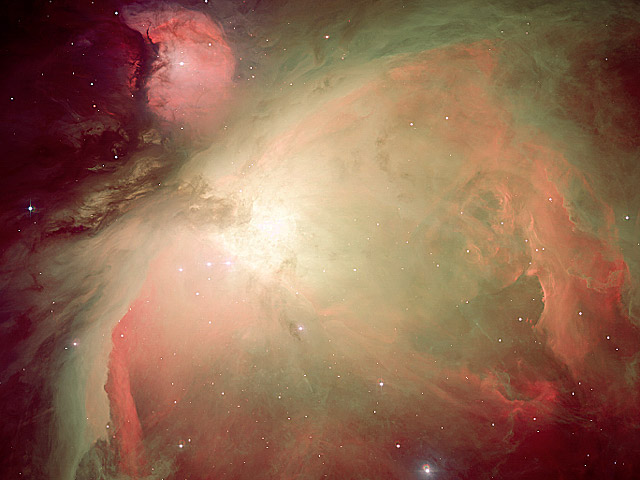Orion Nebula in Oxygen, Hydrogen, and Sulfur

Explanation:
The
Great Nebula in Orion, an
immense, nearby starbirth region,
is arguably the most famous of all astronomical nebulae.
The
Orion Nebula,
also known as M42, is
shown above through
ultraviolet
and blue filters augmented with three exact colors specifically emitted by
hydrogen,
oxygen, and
sulfur.
In addition to housing a bright open cluster of stars known as the
Trapezium, the
Orion Nebula contains many
stellar nurseries.
These nurseries contain glowing gas, hot young stars,
proplyds, and
stellar jets spewing material at high speeds.
Many of the filamentary structures visible in
this image are actually
shock waves - fronts where fast moving material encounters
slow moving gas.
The
Orion Nebula spans about 40
light years and is located about 1500 light years away in the same
spiral arm of
our Galaxy as the
Sun.
Authors & editors:
Robert Nemiroff
(MTU) &
Jerry Bonnell
(USRA)
NASA Web Site Statements, Warnings,
and Disclaimers
NASA Official: Jay Norris.
Specific
rights apply.
A service of:
LHEA at
NASA /
GSFC
& Michigan Tech. U.

